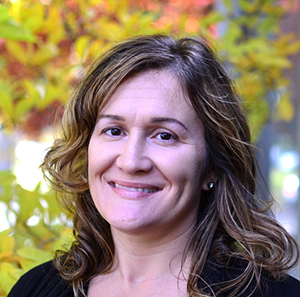In This Article
How Much Do Midwives Make?

Certified nurse midwives are highly educated and earn salaries that reflect their broad duties and responsibilities.
With their advanced education and skills, certified nurse midwives (CNMs) typically rank among the highest-paid nurses, with a median salary of $129,650, according to the U.S. Bureau of Labor Statistics (BLS).
While the majority of midwives in the U.S. are CNMs, there are midwives who aren’t registered nurses, including certified professional midwives, licensed midwives, and lay midwives. These midwives have less education and authority and fewer responsibilities.
Nurse Midwife Salary Compared to Similar Professions
A certified nurse midwife is an advanced practice registered nurse (APRN) who has completed a nursing program in midwifery at the master’s level or above. While they specialize in gynecological and obstetrical care, many CNMs also provide primary care for women and can operate their own practices in many circumstances.
In addition to certified nurse midwives, APRNs include nurse practitioners, nurse anesthetists, and clinical nurse specialists. Because APRNs have at least a master’s in their field, they’re well paid for the knowledge and expertise they bring to their jobs.
Here’s how CNM median salaries stack up against other APRN roles, according to the U.S. Bureau of Labor Statistics:
Demand for CNM Jobs
The American College of Nurse-Midwives (ACNM) reports that CNMs attended 10.3% of all U.S. births in 2019 (up from 9.1% in 2017), according to the most recent data available from the National Center for Health Statistics (NCHS). The demand for certified nurse midwives, along with other APRNs, is expected to increase 6.4% through 2032, according to the BLS.
This is partly because the U.S. has a shortage of primary care providers, and APRNs are expected to fill the gap. Like other APRNs, a CNM can provide a full range of health services, including primary care, depending on the state in which they practice.
As primary care providers, certified nurse midwives can perform many of the same duties as physicians, including ordering and reviewing lab tests and prescribing medications and treatments. Depending on the state, a CNM may also be able to operate a private practice without physician supervision.
Women’s changing attitudes toward health care and pregnancy may be another factor in an increase in CNM jobs.
As primary care providers, certified nurse midwives can perform many of the same duties as physicians, including ordering and reviewing lab tests and prescribing medications and treatments.
“I think demand is growing because people are asking for midwives and realizing the benefits and holistic care they can receive,” says Amber Wilson, CNM, DNP, host of the “Journey to Midwifery” podcast. “Midwives tend to lean toward a more hands-off approach to birth, and people enjoy not having their pregnancy over-managed with interventions. This allows people who are low risk that should have a normal birth to be supported.”
Competition for CNM Jobs
Where you work can affect the degree of competition for CNM positions. For instance, a position in a hospital may be more attractive to many CNMs because of shift work, predictable schedules, and generous benefits. But there is a tradeoff for those who want the autonomy that can come with working in a birth center or as a private practitioner.
Demand for CNM services may be higher in rural areas, where healthcare resources commonly are scarce—but there’s a catch because many rural areas don’t have facilities to accommodate a certified nurse midwife practice, says Sarita Bennett, DO, CPM, president of the Midwives Alliance of North America (MANA).
You can expect competition as a CNM working in private practice, but there are ways to stand out, including promoting patient satisfaction and excellent outcomes.
“In my experience, word-of-mouth among the women of childbearing age in a given location is a powerful driver of client behavior,” says Kathleen Bell, RN, MSN, CNM, AHN-BC, MS1-BC, special advisor to the board of directors of the Oregon Holistic Nurses Association. “Much more so than pricing or third-party payment for care.”
Earning Potential and Job Outlook for Midwives
CNMs can choose from a wide variety of work environments across the country. While the annual median CNM salary is $129,650, the top 10% earn $177,530 versus $87,320 for the lowest 10% of earners, according to the BLS.
Like most other occupations, experience, geographical location, and workplace can affect a certified nurse midwife’s salary.
Here are the top five places of employment for CNMs:
Offices of Physicians
CNMs provide obstetrical, gynecological, and primary care services, plus education and services related to sexual health and contraception.
Annual Median Salary
$127,550
General Medical and Surgical Hospitals
CNMs work as part of a larger team or in a hospital’s birth center. They can prescribe treatment for pain management and assist in delivery.
Annual Median Salary
$135,900
Outpatient Care Centers
CNMs can provide obstetrical, gynecological, and primary care services, depending on the type of center. Birth centers can be included in this category, depending on the services they provide.
Annual Median Salary
$164,080
Offices of Other Health Practitioners
CNMs can deliver services within their scope of practice while working with other health practitioners such as other CNMs, nurse practitioners, or doulas.
Annual Median Salary
$88,340
Colleges, Universities, and Professional Schools
CNMs in educational settings work as faculty instructors in midwifery programs.
Annual Median Salary
$121,260
CNM salaries vary by location. According to the BLS, here are the top five states by annual salary:
| State | Annual Median Salary |
|---|---|
| Maine | $140,440 |
| Hawaii | $161,820 |
| California | $183,740 |
| Massachusetts | $154,080 |
| Oregon | $139,490 |
Advancing Your Career
After earning your certification as a CNM, you can pursue a fulfilling career providing health care for women in office settings and at the bedside. However, there are also opportunities to expand your options and pursue other types of employment within midwifery.
Some midwives pursue positions in areas such as education, politics, or healthcare policy. Others write books, publish journal articles, or have businesses that counsel other midwives on their careers. Depending on your interests, the career opportunities you find as a CNM can be whatever you desire, says Wilson.
Earning a Doctor of Philosophy (PhD) or Doctor of Nursing Practice (DNP) can help you move your career to the next level. These are the highest degrees for CNMs and all APRNs.
Some midwives pursue positions in areas such as education, politics, or healthcare policy. Others write books, publish journal articles, or have businesses that counsel other midwives on their careers.
A PhD can prepare you to conduct research, develop healthcare policies, and teach the next generation of CNMs at the university level. CNMs who earn a DNP can advance to positions such as clinical and program directors and often teach at post-secondary institutions.
While it’s common for a midwife with a doctorate to hold a faculty position in a CNM program, it may not be the initial motivation for pursuing the degree. “As a CNM, more and more people are getting their doctorate, but that’s typically so they can be heads of programs rather than teachers,” says Bennett.

Written and reported by:
Anna Giorgi
Contributing Writer

With professional insight from:
Amber Wilson, CNM, DNP
Host of the “Journey to Midwifery” podcast

Kathleen Bell RN, MSN, CNM, AHN-BC, MS1-BC
Special Advisor to the Oregon Holistic Nurses Association Board of Directors
